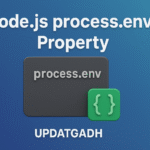
Generalization in DBMS
Generalization in DBMS
Introduction
In the world of database design, managing large volumes of data effectively is a top priority. As systems grow in complexity, organizing data in a structured and logical way becomes essential. One powerful tool to achieve this clarity and structure is generalization. Commonly applied in Database Management Systems (DBMS), generalization helps streamline how data is modeled by combining entities that share similar characteristics into a single, more abstract entity. This reduces redundancy, enhances clarity, and strengthens the overall data architecture.
Machine Learning Tutorial:-Click Here
Data Science Tutorial:-Click Here
Complete Advance AI topics:- CLICK HERE
DBMS Tutorial:-CLICK HERE
Understanding Generalization in DBMS
Generalization follows a bottom-up approach. It begins with specific entities at the lower levels of a hierarchy. When these entities exhibit common features, those features are abstracted into a higher-level generalized entity.
For example, consider the entities “Car” and “Bike”. If both have attributes like engine_number, manufacturer, and model_year, these shared features can be abstracted into a generalized entity called Vehicle. By doing so, we eliminate repetition and introduce a well-structured parent-child relationship.
This process is recursive. As we move upward, if the newly generalized entity shares attributes with yet another entity, further generalization can occur. This allows for layered abstraction, making the database more scalable and adaptable to future growth.
One of the major advantages of generalization is how it simplifies Entity-Relationship (ER) diagrams. Rather than cluttering the diagram with several similar entities, generalization allows designers to combine them into a coherent structure, making the system easier to understand and maintain.
Why Use Generalization in Database Design?
When creating a conceptual database model using ER diagrams, clarity and manageability are crucial. Generalization helps in:
- Reducing redundancy by combining similar attributes into a single location.
- Simplifying relationships by capturing shared data once instead of multiple times.
- Streamlining the schema, especially when entities grow in number and complexity.
For instance, imagine an organization with two types of employees: full-time and part-time. If both categories have attributes like employee_id, name, and department, a generalized entity called Employee can be created. This not only makes the model cleaner but also helps define key attributes and relationships more efficiently.
Moreover, a well-generalized model leads to easier maintenance, better performance, and reduced chances of inconsistency.
Implementing Generalization in DBMS
Generalization essentially merges lower-level entities into a higher-level entity based on shared features. Here’s how it works:
- It resembles the relationship between subclass and superclass.
- The key difference lies in the direction of abstraction: generalization uses a bottom-up approach.
- Specific entities (e.g.,
Student,Faculty) are examined for overlapping attributes. If found, they can be generalized into a parent entity (e.g.,Person).
This structure ensures that unique attributes remain with individual sub-entities, while shared attributes are handled at a more general level.
Example: Generalization in Media Content
To illustrate generalization in action, let’s look at media content.
Entities:
- Television Programmes
Attributes:genre,target_audience,air_time,artists,awards,type,ratings. - Internet Programmes
Attributes:platform,genre,target_audience,upload_time,host,views,likes,ratings.
Shared Attributes:
Both entities share genre, target_audience, artists/hosts, ratings, and awards.
Generalized Entity:
We can create a new entity named Entertainment, which holds the shared attributes. Now, Television Programmes and Internet Programmes become sub-entities of Entertainment, each retaining their specific properties.
This design not only makes the database more efficient but also allows for future additions—like Podcasts or Live Streams—without major restructuring.
Significance of Generalization in DBMS
1. Simplifies Complex Structures
Combining overlapping entities streamlines the schema, making it easier to navigate and design.
2. Reduces Data Duplication
Shared attributes stored once in a generalized entity eliminate repetitive data storage.
3. Clarifies Relationships
Generalized tables improve relational clarity, especially when using foreign keys and referential integrity.
4. Bottom-Up Design
By starting with detailed entities and abstracting upward, designers can systematically build more efficient models.
5. Supports Future Expansion
New entity types with shared features can easily integrate into existing generalized structures.
6. Encourages Reusability
Generalized entities can be reused across modules or systems, saving development time and improving consistency.
7. Enhances Query Performance
Efficient data organization means faster data retrieval, simpler joins, and optimized system performance.
Complete Python Course with Advance topics:-Click Here
SQL Tutorial :-Click Here
Download New Real Time Projects :-Click here
Conclusion
Generalization is a powerful concept in database design that allows developers to abstract shared attributes from multiple entities into a single higher-level entity. This bottom-up approach leads to better scalability, reduced redundancy, and improved schema manageability. Whether you’re designing a small application or a large enterprise system, implementing generalization ensures your database remains flexible, consistent, and future-ready.
specialization in dbms
aggregation in dbms
what is generalization in dbms with example
generalization and specialization in dbms
constraints on specialization and generalization in dbms
generalization in dbms diagram
difference between specialization and generalization in dbms
generalization in dbms in hindi
normalization in dbms
keys in dbms
generalization in dbms with example
generalization in dbms pdf
generalization in dbms geeksforgeeks
generalization in dbms w3schools










Post Comment